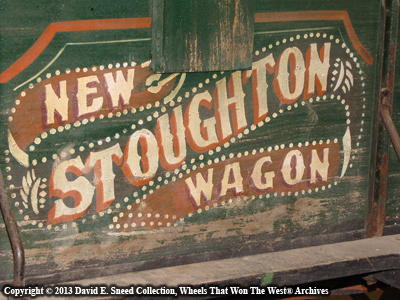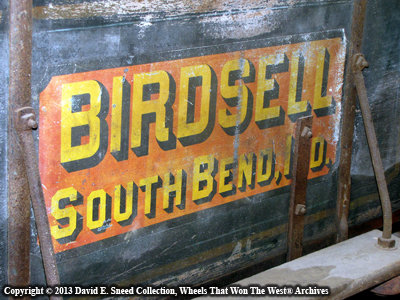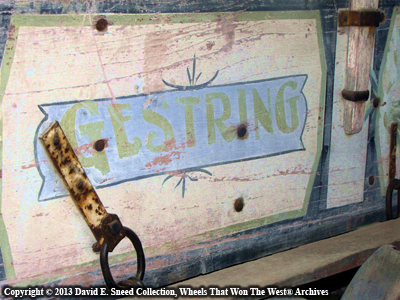When it comes to the most visible placement of a brand name on a wagon, there were several methods involved. Generally speaking, the three most typical methods utilized either transfer decals, stenciling, or hand painting to showcase the maker name. Sometimes a combination of two or more of these processes was utilized. Metal tags were also occasionally used, but were not as prevalent as with buggy and carriage makers.
Hand painted names and logos were among the first ways wagons were branded. As with any type of art, there were various levels of skilled application. While some makers clearly lacked style and professional lettering ability, other brands took the promotion of their brand quite seriously, hiring accomplished artists and sign painters to reinforce a reputation for excellence. Today, almost any hand painted logo is a relatively rare survivor.

Using the pre-formed shapes and patterns of metal stencils was another popular method of applying signage to wagons. Engaged at least as early as the Civil War, stencil use ranged from single metal cutouts for simple paint applications to multiple stencils used to add supplementary colors and/or additional artistic elements like drop shadows and decorative designs. The Stoughton wagon logo shown above utilized three stencils to add both color and style to the insignia.

This Birdsell logo is actually a pre-printed transfer. These pieces were designed to be applied with water. Once they dried on the surface of the wood, they became part of the surface and were impossible to remove without destroying. Many of the most elaborate logos on surviving wagons are actually these printed "decals" attached by the process of decalcomania. While it took a little investment in printing for a maker to acquire these pieces, they paid off in production speed, consistency, efficiency and great looks.
Artistically and tastefully applied, any of these three methods can be attractive and effective in helping showcase a particular brand. Whatever the name, symbol or graphic early wagon makers applied to the vehicle, it was always meant to reinforce the reputation of the firm while simultaneously brandishing a creative badge of honor.
